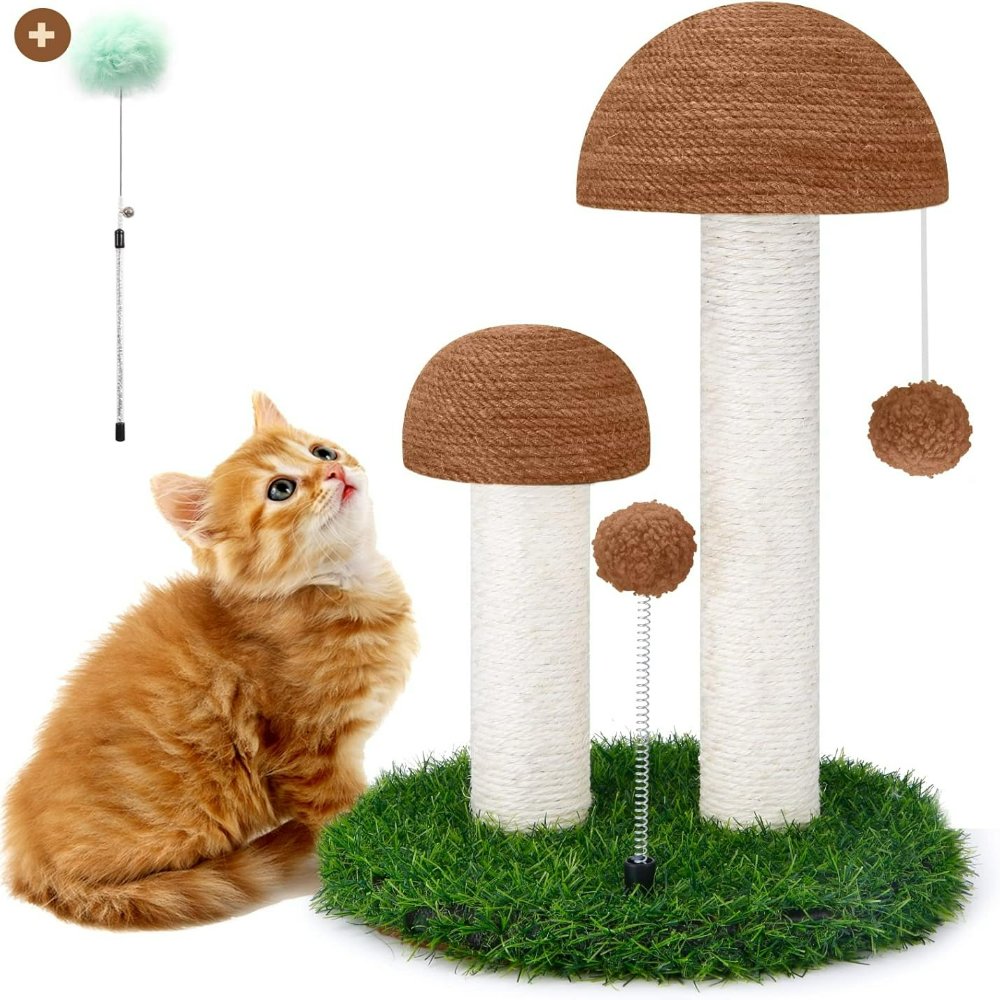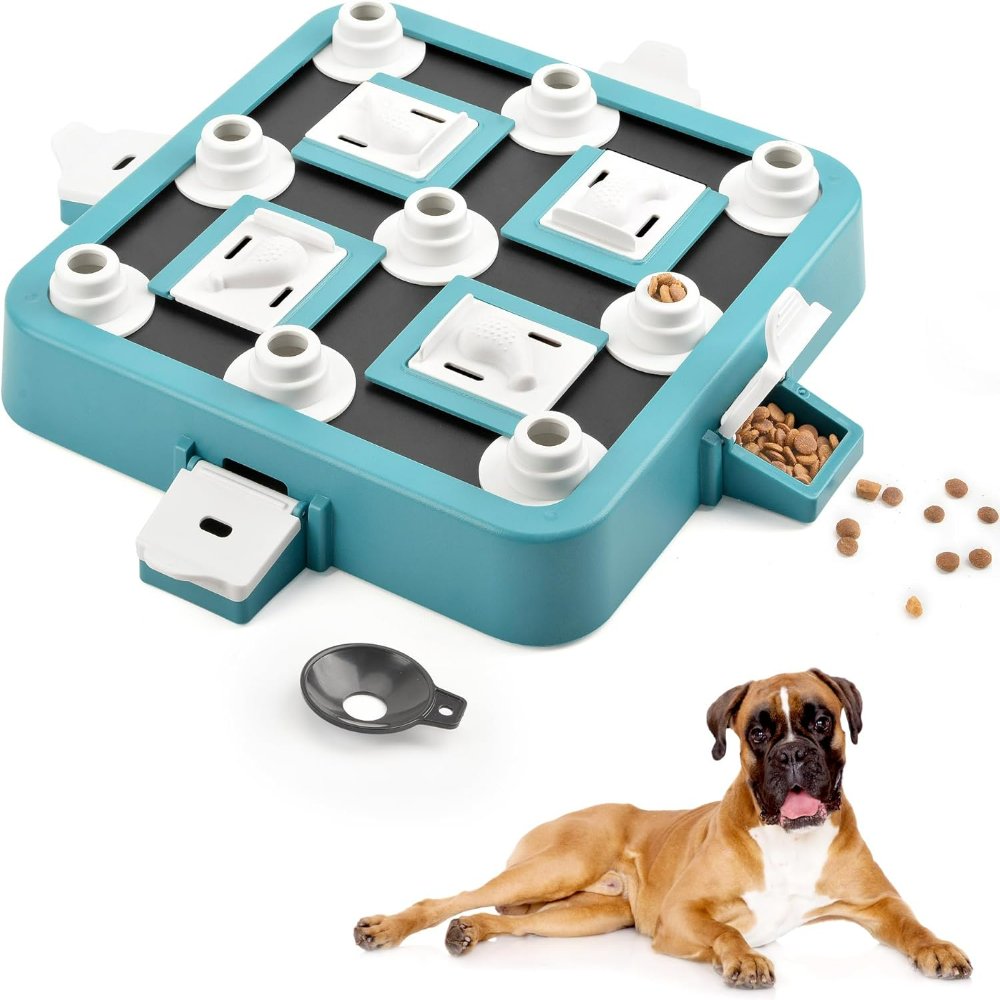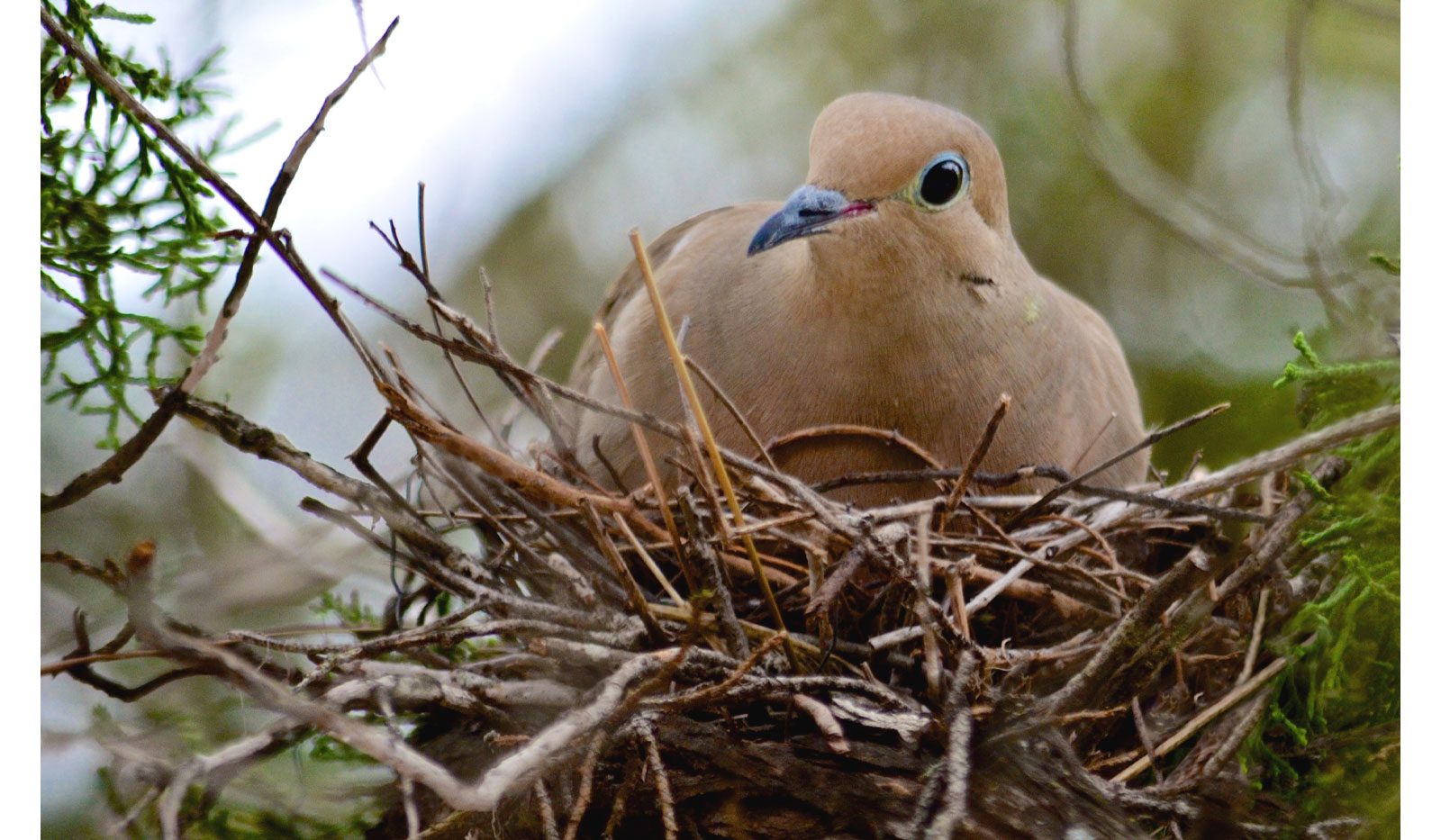Introduction to DIY Cat Trees
Creating a cozy and stimulating environment for our feline friends can be an enjoyable project for any cat lover. DIY cat trees offer a perfect opportunity to craft a unique play area that meets the specific needs and preferences of your pet. Cat tree ideas can range from simple structures to elaborate towers with multiple levels and features. Building a cat tree yourself also allows for personalization in terms of design, size, and materials. Plus, it’s a budget-friendly alternative to store-bought options.
Not only does a DIY cat tree provide physical exercise for your cat, but it also offers mental stimulation and a safe space for them to retreat and observe their surroundings. In the upcoming sections, we’ll explore the essential materials needed, how to plan your design, and provide a step-by-step guide to constructing your own cat tree. We’ll also cover customization ideas to enhance your creation, safety tips to keep in mind, common mistakes to avoid during the process, and final touches that will make your cat tree irresistible to your furry companion.
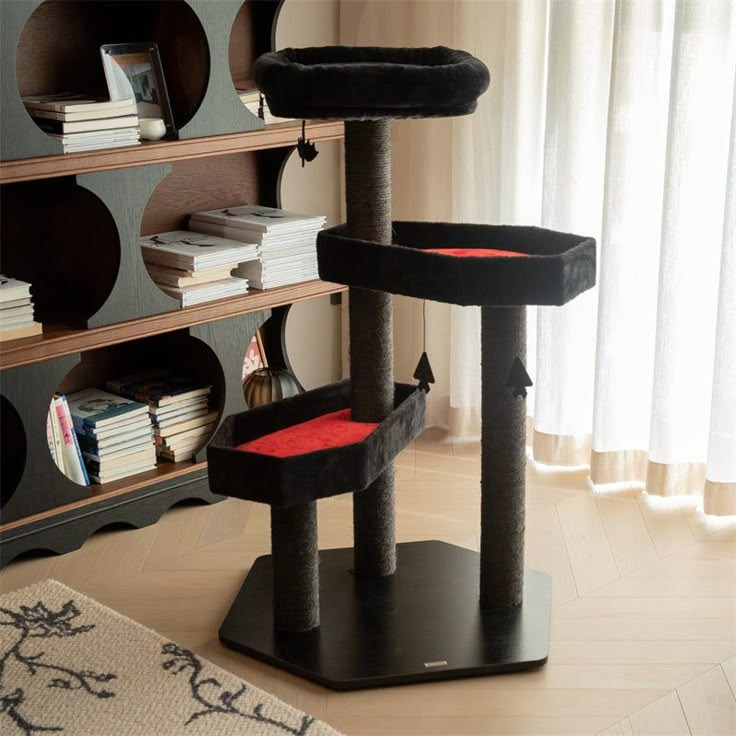
Essential Materials for Building a Cat Tree
When embarking on a DIY cat tree project, gathering the correct materials is crucial. Begin with a sturdy base. This ensures the safety and stability of the structure. Use thick plywood or a heavy wooden board. Next, select pillars for the structure. Solid wood or PVC pipes work well. Wrap them with sisal rope or carpet scraps for scratching. Platforms make up the essential resting spots. Use wooden planks or shelves that fit your design. Soft materials are needed for comfort. Think of faux fur or fleece for covering.
Choose non-toxic adhesives, such as wood glue or screws, for assembly. Tools like a saw, drill, and stapler aid the construction. Keep a measuring tape at hand for accuracy in cuts and spacing. Finally, acquire fun elements. Grab some hanging toys or bells to entertain your cat. These elements combined allow for a durable cat tree. They not only make the tree inviting but also safe and enjoyable for your furry friend.
Planning Your Cat Tree Design
Before you start building, planning your cat tree design is a crucial step. Sketch out a blueprint. Think about your cat’s character. Does your cat love to climb, or does it prefer cozy nooks? The blueprint should reflect your cat’s personality. Consider the size of the space. Measure the area where you will place the cat tree. Ensure the design fits well without crowding the room.
Think vertically and create levels. Cats enjoy heights, so include multiple platforms at various heights. Use sturdy connections between sections for safe climbing. Choose a theme or look. Your cat tree can match your decor or stand out as a statement piece. Plan for adjustable parts. You might want to add or remove sections later.
Factor in all your cat’s activities. Include spaces for climbing, scratching, lounging, and playing. Each feature should cater to these needs. Plan for easy cleaning. Consider materials and designs that are simple to wipe down or vacuum.
By planning carefully, you ensure that your DIY cat tree is both functional and fun for your feline friend. It also helps avoid potential issues during the building process. Careful planning means less waste of materials and time.
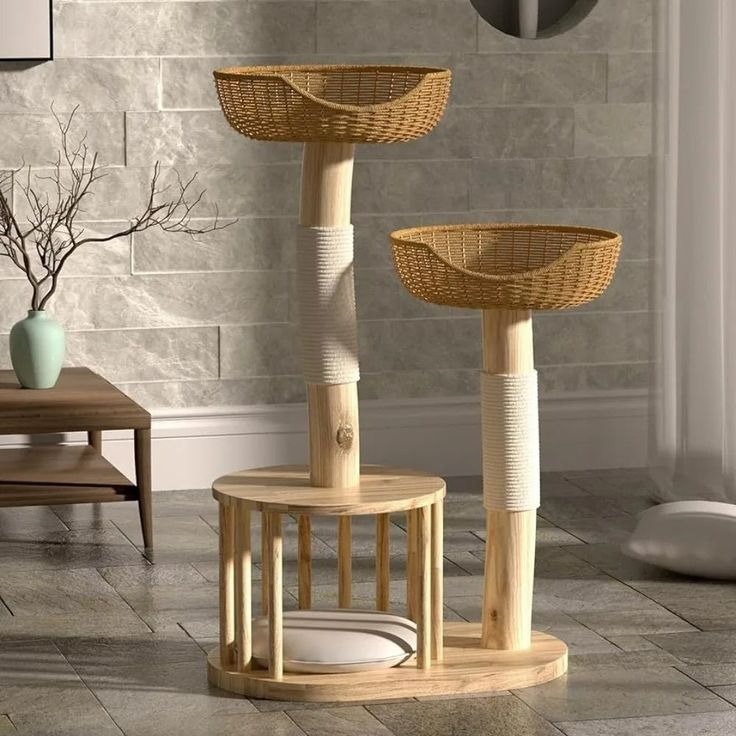
Step-by-Step Guide to Constructing Your Cat Tree
Now that your materials are ready and your plan is set, let’s dive into the construction process. Follow this guide for a smooth and successful build.
- Prepare the Base: Start with a strong foundation. Cut the plywood or wooden board to your desired size. Make sure it’s heavy and wide enough to prevent tipping.
- Assemble the Pillars: Fix the solid wood or PVC pipes to the base securely. Use screws or strong adhesives. Wrap them with sisal rope or carpet for scratching.
- Attach the Platforms: Position the wooden planks or shelves at different levels. Secure them to the pillars. Ensure they’re spaced out for easy climbing.
- Cover for Comfort: Cut the faux fur or fleece to fit the platforms. Attach them with glue or a stapler. This provides a soft resting place for your cat.
- Install Fun Features: Dangle hanging toys or bells from the platforms. Affix them where your cat can play and interact.
- Check for Stability: Before introducing the cat tree to your pet, test its sturdiness. Apply pressure to confirm that all parts are firmly attached.
- Introduce to Your Cat: Let your cat explore the new structure. Place it in a favorite spot to encourage use. Watch as they climb, scratch, and enjoy.
By following these steps, you’ll craft a cat tree that is both sturdy and enjoyable. Remember to use cat tree ideas that fit your pet’s unique personality and needs. A well-built cat tree will provide endless entertainment and a sense of security for your feline companion.
Customization Ideas for Your Cat Tree
Creating a DIY cat tree is not only about structure and stability, but also about personalizing it to suit your cat’s preferences and to make it an attractive piece in your home. Here are some customization ideas for your DIY cat tree that can make it truly special:
- Choose a Color Scheme: Pick colors that match your home decor or add a pop of color. Use safe, pet-friendly paint or fabric.
- Incorporate Interactive Elements: Think of integrating puzzle toys, dangling feathers, or spring-loaded toys for extra fun.
- Add Multiple Textures: Use a mix of carpet, faux fur, and sisal rope to keep your cat’s interest. It can also aid in sensory stimulation.
- Design Themed Levels: Consider themes like jungle, space, or beach for different levels. This can give a playful look to your cat tree.
- Install Cozy Hideaways: Create little huts or cubbies lined with soft bedding for naps and privacy.
- Include Perches with a View: Place platforms near windows so your cat can gaze outdoors. It’s perfect for their curiosity and instinct to survey their domain.
- Secure Shelves for Cat Naps: Ensure there are stable, flat areas for your feline to rest and stretch out comfortably.
- Utilize Vertical Space: Encourage climbing by spacing out platforms in a way that challenges your cat to jump and climb.
- Use Removable Covers: Fabric covers that can be taken off and washed make cleaning easier.
- Experiment with Shapes: Go beyond conventional designs; use circular or oval platforms to create a unique look.
Each of these cat tree ideas should align with your cat’s character and needs, ensuring that your DIY project results in a functional, fun, and fashionable piece for both you and your pet.
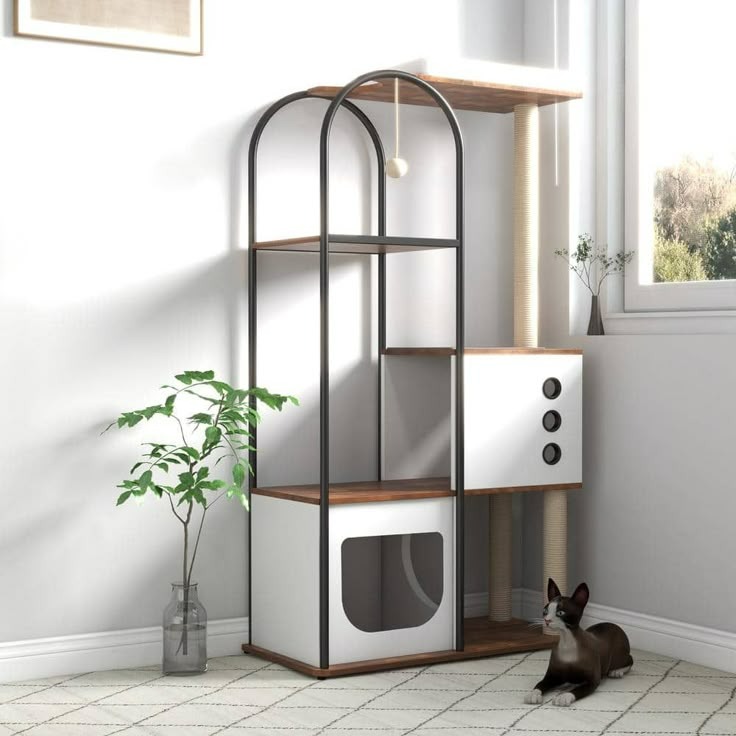
Safety Tips for DIY Cat Trees
When crafting a DIY cat tree, your cat’s safety comes first. Here are key tips to ensure a secure play area for your pet:
- Sturdiness is Paramount: Make sure the base is wide and heavy. This stops the cat tree from tipping over.
- Check Materials for Toxins: Use only non-toxic adhesives and paints. Cats can chew on or lick these substances.
- Secure all Components: Double-check that all parts are tightly fastened. Use screws or trusted adhesives to hold everything in place.
- Avoid Sharp Edges: Sand down any rough areas. Your cat should not scratch or cut themselves on exposed edges.
- Stable Platforms are Essential: Make sure each level is balanced and firmly attached. This prevents falls during climbing or playing.
- Inspect Regularly: Look over the cat tree for loose parts or wear. Fix problems right away to keep your cat safe.
- Choose Safe Decorations: Select toys and accessories that won’t cause choking. Avoid small or detachable parts.
- Test Before Use: Give the cat tree a thorough check. Push on it to simulate your cat’s activity and confirm its stability.
These safety tips will help you create a cat tree that’s not only fun but also safe for your furry friend to enjoy.
Common Mistakes to Avoid When Building a Cat Tree
Building a DIY cat tree can be exciting. Yet, it’s easy to slip up during the process. To keep those slips from turning into flops, avoid these common mistakes:
- Ignoring the Base Size: Don’t underestimate the importance of a strong base. A too-small base can lead to your cat tree tipping over. Ensure it’s wide and stable.
- Skipping the Plan: Jumping in without a design plan is risky. Take time to sketch out your cat tree ideas. It saves time and materials in the end.
- Choosing Weak Materials: Opting for flimsy materials can result in a shaky tree. Use solid wood or PVC for strength. Ensure all materials can hold your cat’s weight.
- Forgetting to Secure Structures: Each level must be firmly attached. Use screws or strong adhesives instead of just nailing parts together.
- Neglecting Cat Preferences: Make it a fun spot for your pet, not just a human aesthetic. Include various textures and areas to explore, based on your cat’s likes.
- Overcomplicating the Design: A complex cat tree isn’t always better. Keep it simple so your cat can easily navigate and enjoy its use.
- Skimping on Scratching Posts: Your cat needs to scratch. Cover enough areas with sisal rope or carpet to satisfy this need.
- Poor Space Planning: Don’t let the cat tree crowd the room. It should fit the allocated space without hindering movement.
- Using Toxic Substances: Cats chew and lick their environment. Ensure that all paints, glues, and materials are non-toxic.
- Lack of Regular Inspection: A once perfect cat tree can wear out. Check and maintain it regularly to keep it safe and inviting.
Final Touches: Making Your Cat Tree Irresistible to Felines
Your DIY cat tree is almost ready for your kitty’s enjoyment. Let’s add those final touches that will make it irresistible. Start with enticing scents. Cats love catnip. Sprinkle some on the platforms or tuck catnip pouches in hidden corners. Next, think comfort. Ensure soft beds or blankets adorn the highest perches. Cats love warmth. Place the tree in a sunny spot. They will bask for hours.
Opt for appealing textures. Include a variety of materials, like plush fabric and jute. It will stimulate your cat’s senses. Remember visual excitement. Dangle colorful ribbons or balls from the platforms. But, make sure they are secure. Safety is key. Check again for any loose items or sharp edges.
Add some natural elements. Think about attaching branches or leaves for a touch of the outdoors. Ensure they are safe and pesticide-free. Give your cat’s tree a name. Personalize it with a cute sign. It’s a fun touch for both you and your kitty.
By carefully considering these final elements, you heighten your cat’s interest and provide them with an ultimate retreat. They will love the personal paradise you’ve created just for them. With the right cat tree ideas and attention to detail, it will become their favorite spot in the house.
